Acclaimed director Todd Haynes’ 2015 tragic drama, ‘Carol,’ is a fascinating romance that follows a love encounter between two women in 1950s New York, which was never meant to be. Working at a department store, Therese Bulivet, a young aspiring photographer, makes an acquaintance with Carol Aird, an older woman trapped in a loveless marriage. A connection sparks between the two, and together, they experience love, societal prejudices, and what it feels like to gain personal freedom, even if momentary. The movie, adapted from Patricia Highsmith’s novel ‘The Price of Salt,’ features outstandingly nuanced performances by Cate Blanchett and Rooney Mara. For viewers who like ‘Carol,’ we’ve curated a list of 12 heartbreaking romantic drama films.
12. Summertime (2015)
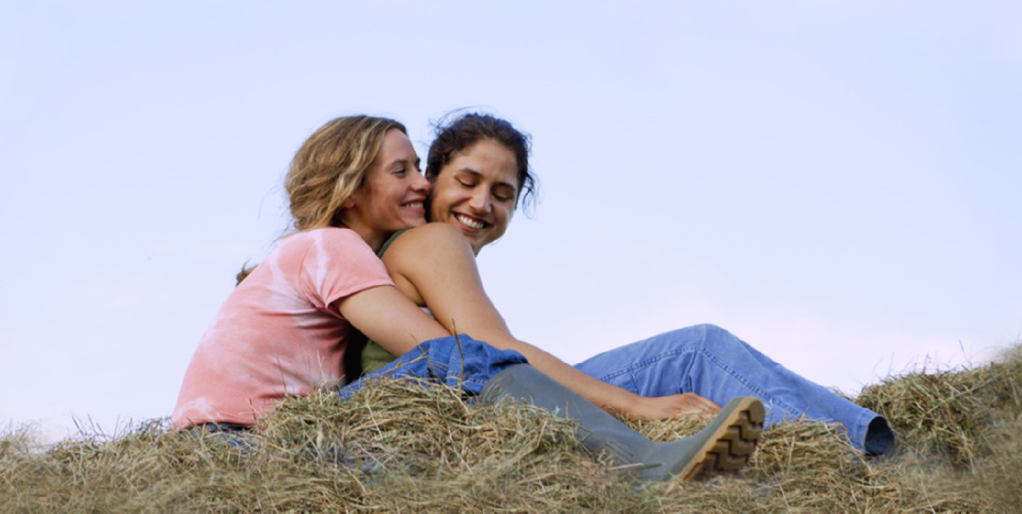
Originally known as ‘La Belle Saison,’ this French drama tells the story of Delphine, a young woman from a rural background, and Carole, a women’s rights activist in Paris during the early 1970s. After a former girlfriend of hers breaks up with her to marry, Delphine, not wanting to comply with her father’s similar wish, runs away to Paris. After a chance encounter — when several young women are inappropriately groping strange men’s buttocks — she meets Carole and agrees to join her group’s activism.
With various themes ranging from self-discovery and societal norms to the struggle for acceptance, the Catherine Corsini directorial echoes the same emotional and social challenges that are faced by the protagonists in ‘Carol.’ The backdrop of a significant era in history and a screenplay that makes their relationship seem bigger than just the two of them also serve to the depth.
11. Fire (1996)
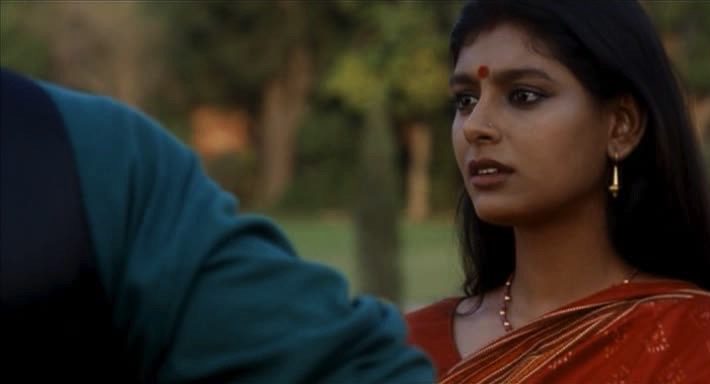
A highly controversial and groundbreaking venture, this 1996 Hindi film is credited with launching director Deepa Mehta’s ‘Elements’ trilogy. ‘Fire’ explores the relationship between two women, Sita (Nandita Das) and Radha (Shabana Azmi), who are trapped in oppressive marriages. Set in contemporary India, Mehta’s film studies the darker truths behind patriarchy, tradition, and the unlawful treatment of exploring sexual identities. The portrayal of forbidden love between its protagonists and the fight for personal freedom resonates with the struggles depicted in ‘Carol.’ The cultural context adds a layer of complexity to the characters’ defiance against societal norms.
10. Ammonite (2020)
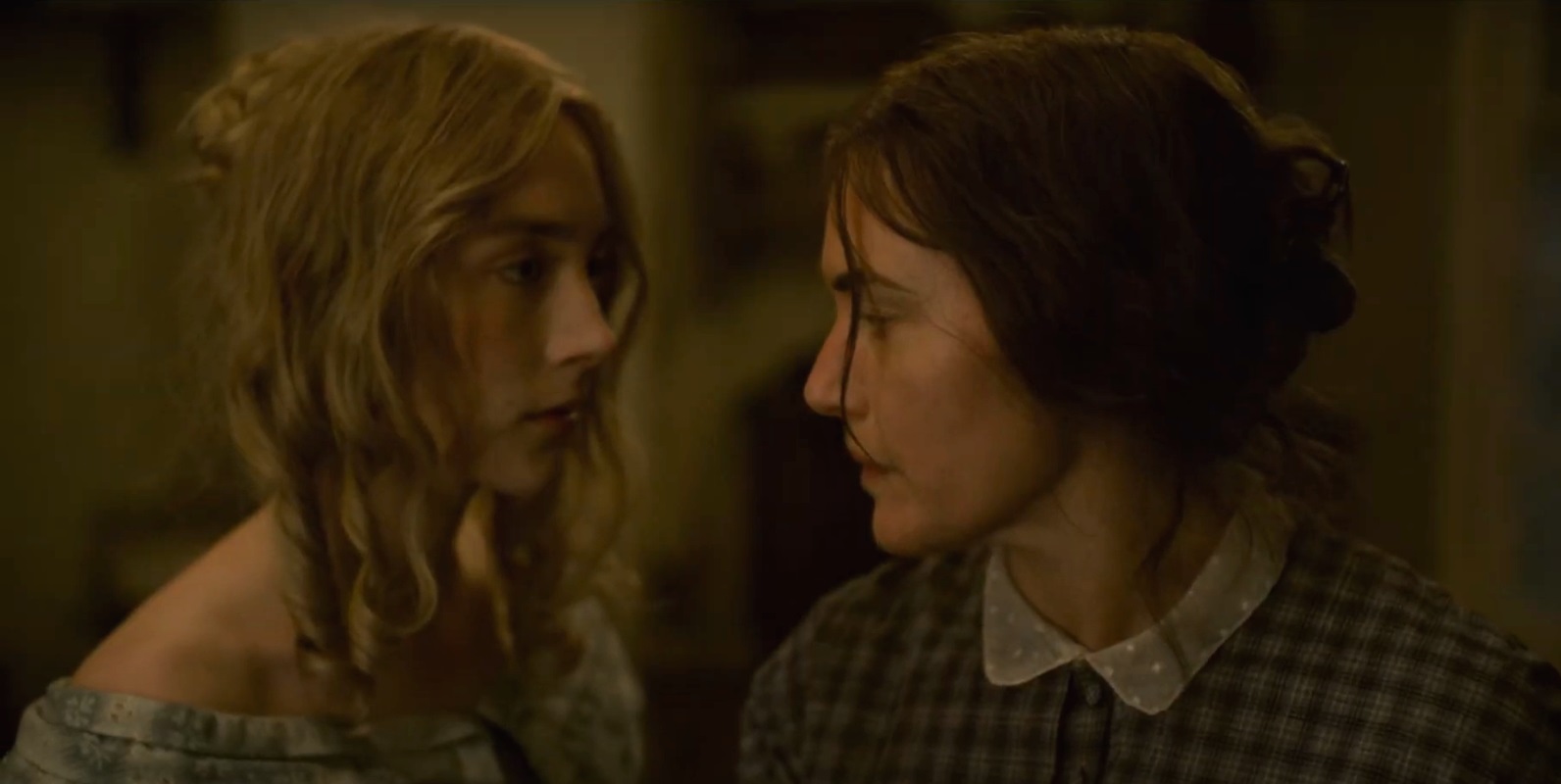
Francis Lee’s period romance ‘Ammonite’ is the retelling of speculations about the relationship between archeologist Mary Anning (Kate Winslet) and geologist Charlotte Murchison (Saoirse Ronan) in the 1840s. A young woman trapped in a strained and sexless marriage, the latter forms a deeper and tender friendship with Mary despite the constraints of their time. Lee’s tale of forbidden romance is rooted in the self-discoveries of its two leading characters, with Mary vowing to devote herself to the studies of fossils and Charlotte discovering resilience to keep her seemingly miserable life going.
The slow-burning romance — along with the barriers a soulless marriage puts on individuals, prompting them to seek human warmth outside — echoes the themes and plot structure of ‘Carol.’ In addition to the stories’ focus on the protagonists’ inner lives, several trivial details, such as the drastic age difference between the romantic partners and the passionate sex scenes, also add to their resonance.
9. Blue is the Warmest Color (2013)
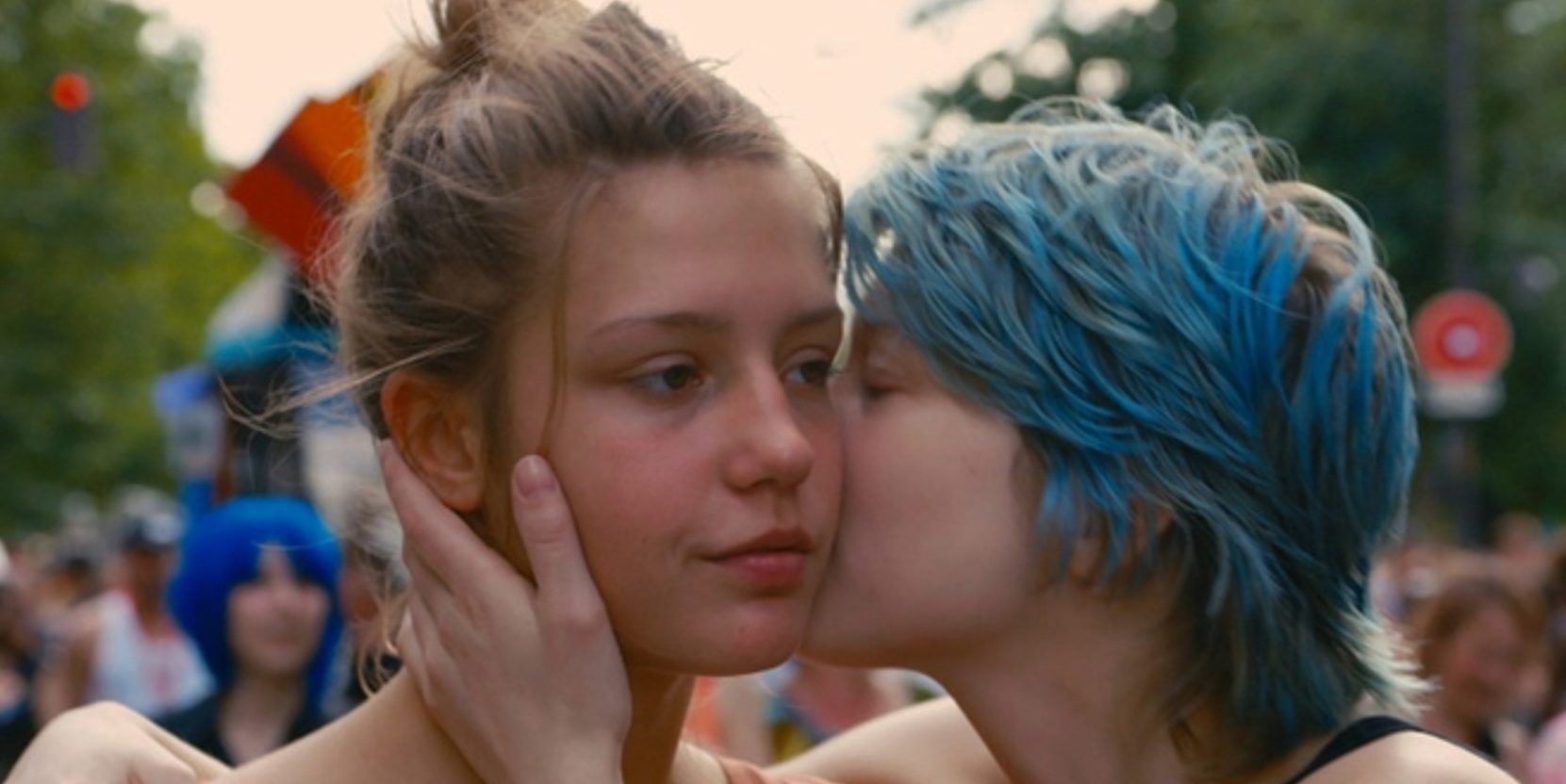
Based on French writer and artist Jul Maroh’s eponymous graphic novel, director Abdellatif Kechiche’s adaptation follows the life of Adèle (Adèle Exarchopoulos), a high school student, and her transformative relationship with Emma (Léa Seydoux), a blue-haired art student. As the film’s title indicates, Emma’s arrival brings new experiences in Adèle’s life as the two rediscover love, identity, and personal growth over several years. Kechiche’s raw and intimate vision, along with the performances of its lead actresses, touches new heights of passion in a romantic tale.
Known for its graphic and explicit depiction of nudity and sex, the film doesn’t leave many marks unchecked to stress the physical nature of love. ‘Blue is the Warmest Color’ also reflects the purity of love between Therese and Carol. The characters’ realistic journeys — in a plot that is no exception to the characters’ rapidly moving worlds — turn the stakes higher and the romantic connections even more powerful.
8. Tell It to the Bees (2018)
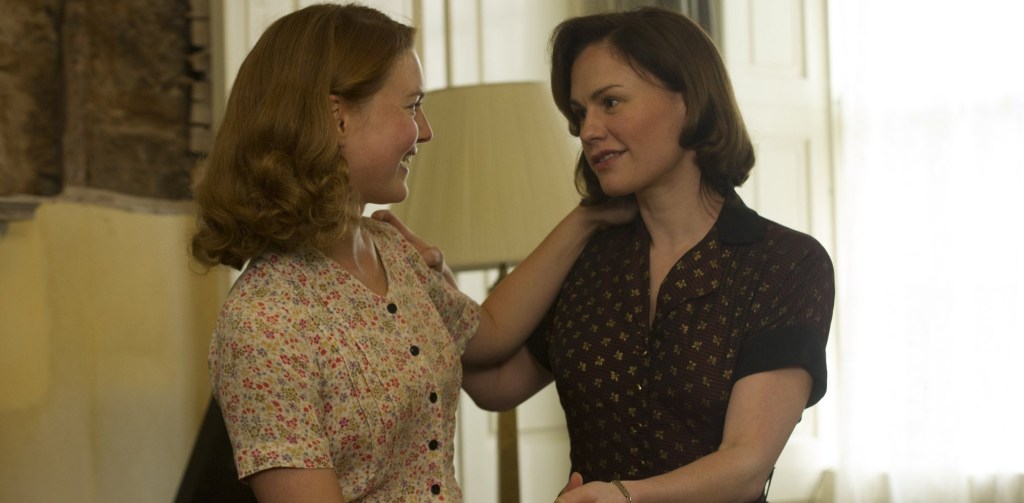
Director Annabel Jankel’s period drama follows the relationship between Lydia, a single mother, and Jean, a doctor who returns to her hometown. Lydia, struggling with financial difficulties and societal disapproval in mid-20th century Scotland, finds solace in Jean’s companionship. As their bond deepens, they face increasing prejudice from their conservative community.
Based on Fiona Shaw’s novel, ‘Tell It to the Bees,’ the drama accurately portrays the societal prejudice surrounding forbidden love between Lydia and Jean and the personal courage they hit those back with, mirroring the adventures of the lead couple in ‘Carol.’ The period setting — the 1950s in each story— emphasizes the societal constraints that both pairs of women must navigate and the degree of resilience they must gather.
7. The World to Come (2020)
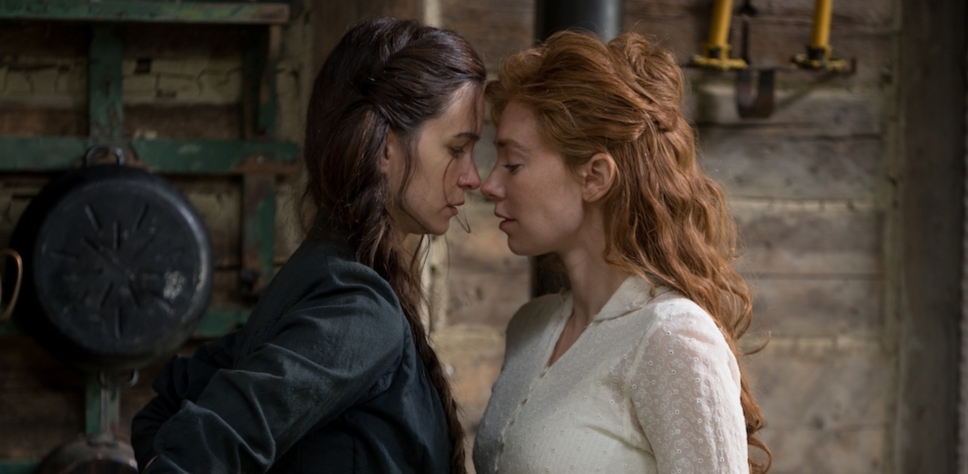
Based on the film’s screenwriter, Jim Shepard’s short story of the same name, ‘’The World to Come,’ is another drama that utilizes a historical backdrop to echo the hardships people had to face over their preference of sexual orientation. Set in the 19th century, the Western follows the lives of Abigail (Katherine Waterston), a farmer’s wife, and Tallie (Vanessa Kirby), her new neighbor. Both women, feeling isolated and trapped in their respective marriages, develop a heartfelt connection that offers them a sense of solace and understanding.
Directed by Mona Fastvold, the film, much like ‘Carol,’ highlights the importance of companionship and the surprising place one might discover it. The two films poetically comment on the fear the oppressive nature of society has over romantic partners and the intensity of relationship dynamics that reinforce such couples with profound strength to fight it.
6. The Duke of Burgundy (2014)
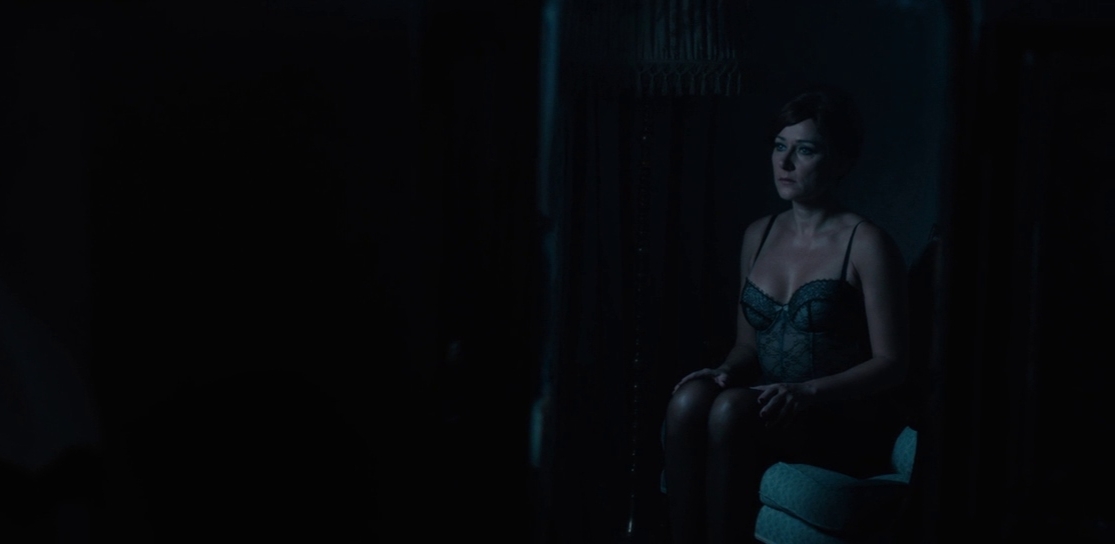
‘The Duke of Burgundy’ is an erotic cinema affair chronicling the sexually graphic, consensual BDSM relationship between entomologists Cynthia and Evelyn. Taking place in a timeless European setting, the Peter Strickland directorial — said to have been based on the encounters between Spanish filmmaker Jesus Franco and actress Monica Swinn — explores power dynamics, desire, and emotional dependency.
The convoluted structure of the intimacy Cynthia and Evelyn share and their nuanced retelling through unspoken expressions draw parallels to ‘Carol.’ Both films fuel the sexual encounters of their respective partners with exterior pressure from society, thus, treating the obstacles as a catalyst. Moreover, the two narratives similarly opt for detailed character-driven studies and human interactions without excessively relying on physics mediums, such as dialogues.
5. Portrait of a Lady on Fire (2019)
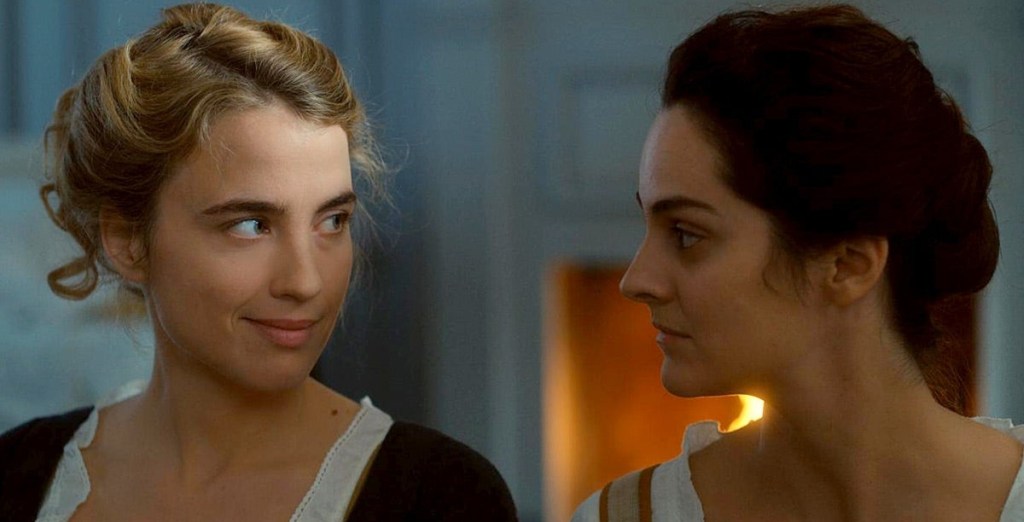
Set in 18th century France, this period drama follows the story of Marianne (Noémie Merlant), an artist and later art teacher, and Héloïse (Adèle Haenel), a reluctant bride-to-be, whose portrait Marianne is commissioned to paint. Directed by Céline Sciamma, the themes in ‘Portrait of a Lady on Fire’ go beyond a forbidden relationship between two women, but any consenting marriage for that matter.
The slow-burning romance takes a nuanced route, thanks to Sciamma’s own artistic expression and her understanding of female solidarity. Along with its historical backdrop and evocative cinematography, the drama also captures the emotional bond between the two characters, much like ‘Carol.’ Both films emphasize the significance of the female gaze and the unspoken connection between lovers.
4. Weekend (2011)
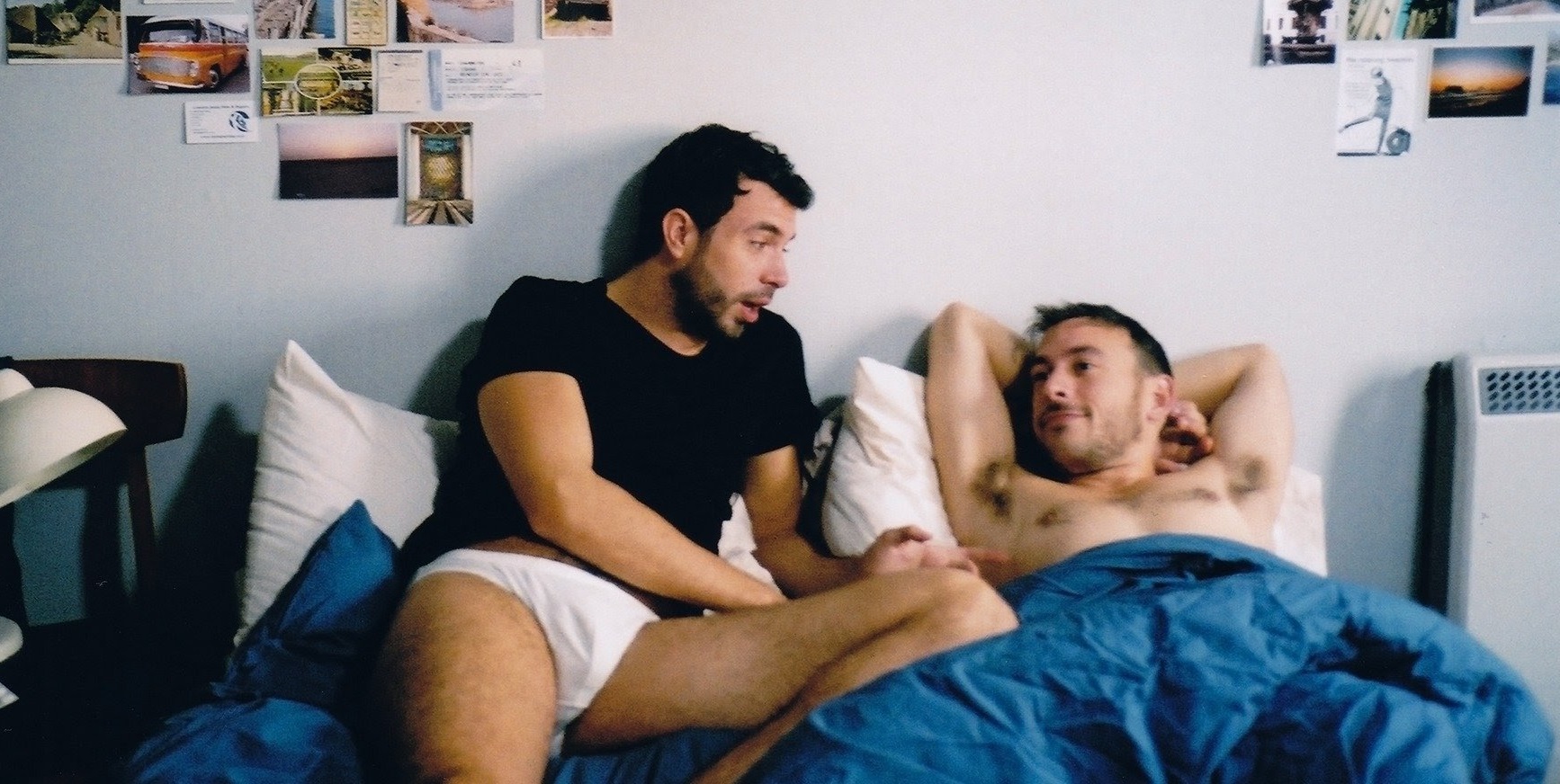
Directed by Andrew Haigh, this British romantic drama follows the brief but intense connection between Russell and Glen over a two-night period. ‘Weekend’ captures the raw and realistic portrayal of modern romance, focusing on the nuances of intimacy, identity, and the ephemeral nature of relationships. As Russell and Glen navigate their emotional vulnerabilities, the film sheds light on their backstories which include foster parents, unfaithful partners, sex addiction, and finding motivation for art through hookups.
This authentic depiction of discussions mirrors the subtle interactions found in ‘Carol.’ Both films highlight how societal pressures shape and challenge the protagonists’ relationships, and no matter how much they want to go for it, there is so much in adult lives that may prevent the emotional journey to reach a happy destination.
3. Happy Together (1997)
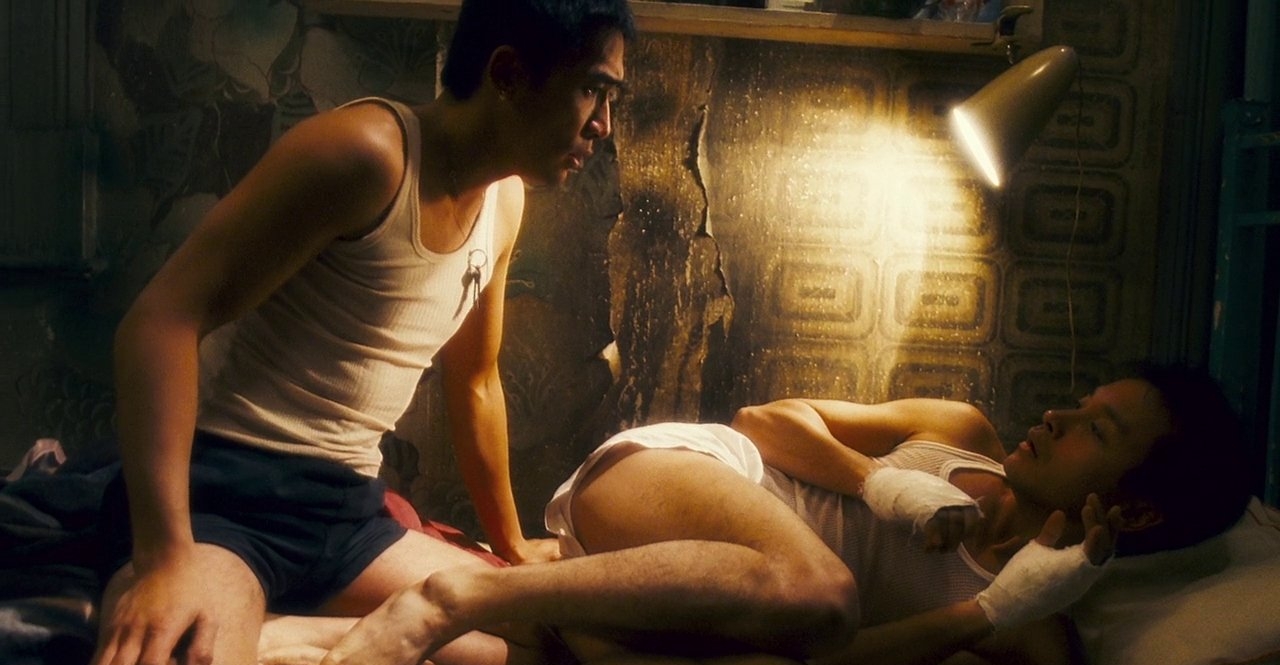
An auteur in directing romance dramas, Wong Kar-wai delivered another acclaimed venture in the form of ‘Happy Together.’ This Hong Kong film chronicles the relationship between two men, Ho Po-wing and Lai Yiu-fai, as they take a long journey to Buenos Aires, stuffed with proclamations of love and cries of heartbreak.
The story paints an authentic picture of two lovers being all over each other in their happiest moments and getting fed up with each other in the darker ones. Its exploration of complex emotional landscapes and human beings’ primal need for connection mirrors the seemingly lonely and often painful journey of love found in ‘Carol.’ The signature vivid cinematography of Kar-wai, along with an overall melancholic tone, strikes chords with the Cate Blanchett film.
2. Vita & Virginia (2018)
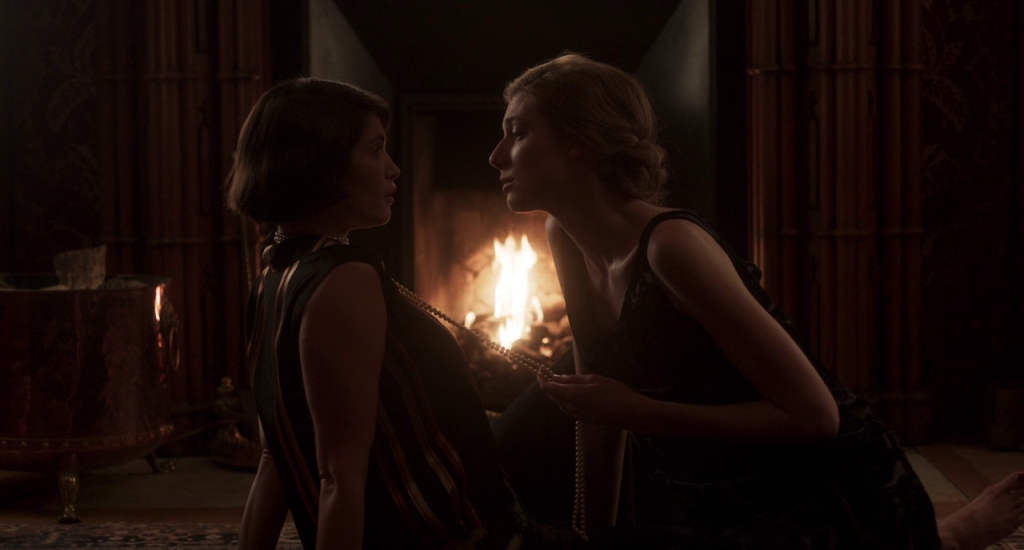
Director Chanya Button and screenwriter Eileen Atkins adapted the latter’s play, ‘Vita & Virginia,’ which chronicles the complexities of the affair between writer Virginia Woolf and socialite Vita Sackville-West in the 1920s. The adaptation exhibits the independence and social power Virginia (Elizabeth Debicki) and Vita (Gemma Arterton) had as each of them vows to infiltrate the other’s circle and lend in their bed. The couple’s subsequent affair, along with each of their open marriages, would also form the basis of the author’s novel, ‘Orlando,’ showing how their bond influenced and contributed to the rich history of art and literature.
‘Vita & Virginia’ is rooted in the themes of luxury, creativity, identity, and the transcendental power of love as it captures two cunning and sophisticated women to learn to look beyond themselves and crave the need for company. The period setting of the film, combined with the balance of societal expectations, personal freedom, and married life, draws similarities to ‘Carol.’ The film’s portrayal of the challenges and triumphs faced by Vita and Virginia during their unconventional relationship echoes the similarly nuanced character-driven nature of Therese and Carol’s affair.
1. Far from Heaven (2002)
Helmed by ‘Carol’ director Todd Haynes, ‘Far from Heaven’ is a homage to 1950s melodramas, focusing on the lives of Cathy Whitaker (Julianne Moore), a suburban housewife, and Raymond Deagan (Dennis Haysbert), an African American gardener. The evolution of the unconventional relationship between the two challenges the underlying sexual and racial norms of the era. The film studies the elements of forbidden love and personal freedom, much like ‘Carol.’
The stylistic and thematic elements of ‘Far From Heaven’ also closely resemble the 2015 romance, as both dramas delve into the complexities of love and societal constraints. Haynes’ involvement in the projects results in innumerable parallels between them, right from the 1950s setting to the lush cinematography and period setting, enhancing the emotional impact of the characters’ journey. Thematically, Cathy’s journey of self-discovery and defiance against societal expectations mirrors Carol’s struggles.
Read More: Is McKinley Motel in Carol an Actual Motel in Ohio?

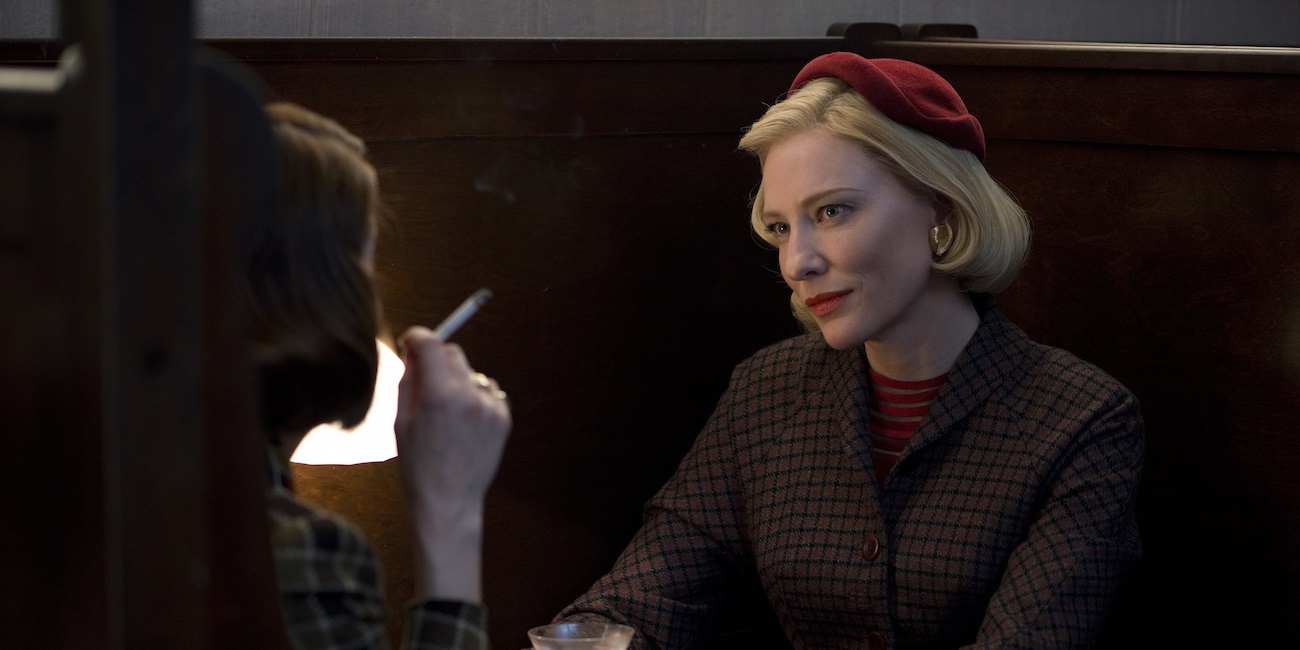
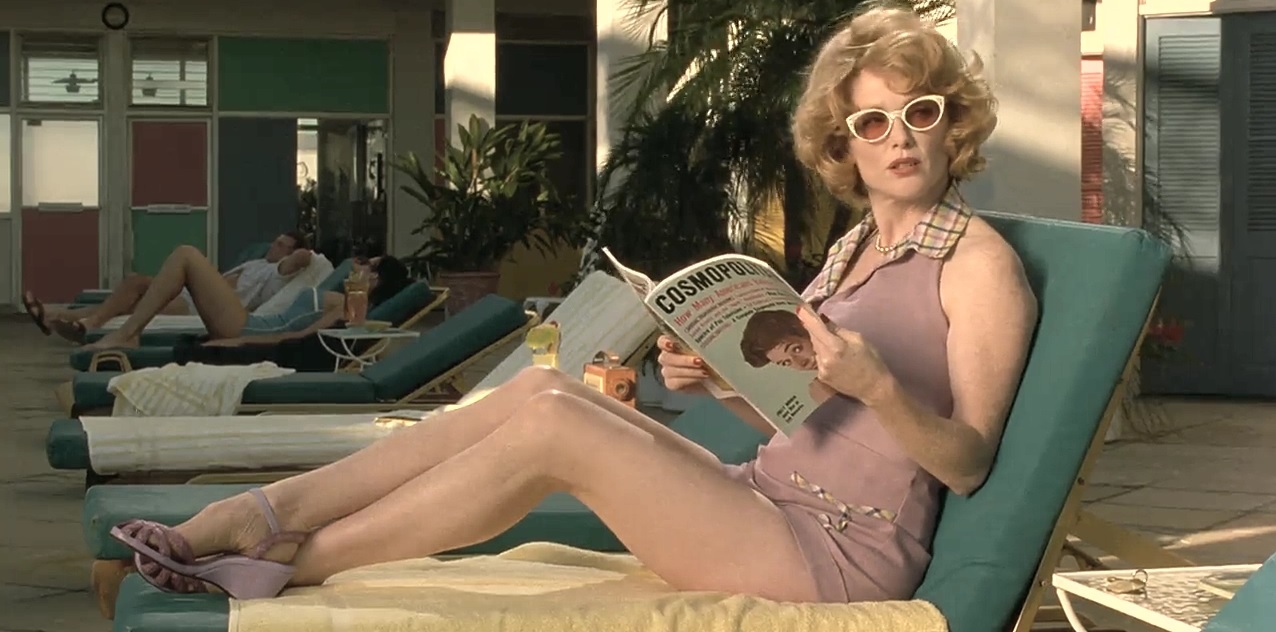
You must be logged in to post a comment.